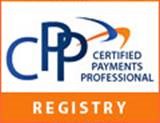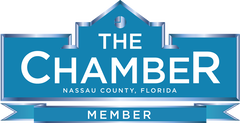|
Fighting fraud is all of our responsibility and a little diligence on your part could save your business hundreds or thousands of dollars. Don’t be shy about contacting a Risk Representative at Capital Bankcard if you are unsure about an order or transaction. We can help you determine if the transaction is legitimate and give you guidance on steps you can take if you are suspicious. If you believe a card is stolen, fraudulent or otherwise suspicious, you should train your staff on how to make a Code 10 authorization request. The Code 10 authorization request alerts the card issuer to the suspicious activity-without alerting the customer. During a Code 10 call, you will speak to the card issuer’s special operator, who will provide instructions on any necessary action. This type of authorization request is the most likely to result in a call to law enforcement.
Code 10 steps Keep the card in hand to quickly respond to questions. Call 1-800-228-1122 and say “I have a Code 10 Authorization Request.” When connected to the special operator, answer all questions calmly and in a normal tone of voice. Follow all operator instructions. If the operator asks you to retain the card, comply with this request only if it is safe to do so. If you are keying transactions or receiving them off the internet, you are at even more risk for fraud. Below are some red flags to watch out for in these environments. Orders that require you to ship product outside of the United States. There are obviously very legitimate orders from overseas but, if your business does not normally receive such orders, or receives any which seem unusual, you should give them extra scrutiny. Transactions requiring you to “prepay” the shipping costs via Western Union to a specific shipping company being used at your customer’s request. Any suspicious sounding shipping arrangements are a good sign of potential fraud. Unusually large orders or those containing multiple quantities of the same item. You know your business better than anyone. If a large order seems particularly unusual in any way, trust your instincts and follow-up on it. Thieves know a stolen card number won’t last long so they typically place large orders while they can. They are also always looking to maximize their resale value. Orders from generic e-mail addresses (ie. [email protected]) or calls using TDD (telecommunications device for deaf) to place orders. Many of these orders are legitimate, but they are sometimes indications of a fraudster looking to remain anonymous. “Rush” or “overnight” shipping requests. Crooks want your goods as soon as possible for the quickest possible resale. The last thing they care about is extra delivery charges. Transactions with similar account numbers, multiple orders from one account or multiple orders to one address from multiple cards. These are all highly suspicious and are worth your attention. We want to ensure that you and your associates are able to spot potential fraud and take action quickly in order to prevent fraud and protect your business, but only when it is safe to do so.
0 Comments
Leave a Reply. |
First Coast PAYMENTS BLOGWe eliminate the junk fees others charge. Archives
June 2024
Categories
All
|
Credit Card Processing for small to mid-size businesses. We eliminate the junk fees.
Serving Northeast Florida, including Jacksonville, Fernandina Beach, Yulee, and beyond.
Admin | Privacy
Site powered by eCoalitions.net
First Coast Payments is a registered agent office for several ISO/MSP. Disclosure.
© 2024 First Coast Payments. All Rights Reserved.
Serving Northeast Florida, including Jacksonville, Fernandina Beach, Yulee, and beyond.
Admin | Privacy
Site powered by eCoalitions.net
First Coast Payments is a registered agent office for several ISO/MSP. Disclosure.
© 2024 First Coast Payments. All Rights Reserved.

 RSS Feed
RSS Feed

